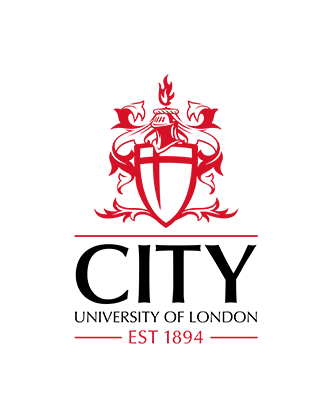Expiratory Muscle Strength Training to Improve Voice and Respiratory Outcomes After Laryngectomy: A Feasibility Study
Sparks, F.  ORCID: 0000-0002-2406-4944, Coffey, M., Dipper, L.
ORCID: 0000-0002-2406-4944, Coffey, M., Dipper, L.  ORCID: 0000-0002-5918-3898 , Crowther, J., Hamilton, S., Occomore-Kent, L.
ORCID: 0000-0002-5918-3898 , Crowther, J., Hamilton, S., Occomore-Kent, L.  ORCID: 0000-0002-6212-5461 & Hilari, K.
ORCID: 0000-0002-6212-5461 & Hilari, K.  ORCID: 0000-0003-2091-4849 (2025).
Expiratory Muscle Strength Training to Improve Voice and Respiratory Outcomes After Laryngectomy: A Feasibility Study.
International Journal of Language & Communication Disorders, 60(5),
article number e70107.
doi: 10.1111/1460-6984.70107
ORCID: 0000-0003-2091-4849 (2025).
Expiratory Muscle Strength Training to Improve Voice and Respiratory Outcomes After Laryngectomy: A Feasibility Study.
International Journal of Language & Communication Disorders, 60(5),
article number e70107.
doi: 10.1111/1460-6984.70107
Abstract
BACKGROUND: People with laryngectomy who use a tracheoesophageal voice prosthesis for communication experience changes to respiratory function resulting in reduced breath support and increased secretions. This impacts tracheoesophageal voice quality and volume. Expiratory muscle strength training (EMST) is an effective treatment for cough management, voice and respiratory function in other clinical populations, such as neurodegenerative conditions and benign voice disorders. There is limited evidence for the use of EMST in people with laryngectomy. This study explores EMST feasibility and preliminary efficacy with tracheoesophageal speakers. It is hypothesised that, like in other disorders, EMST can improve respiratory parameters and thus tracheoesophageal voice quality.
AIMS: (1) To investigate the feasibility and acceptability of EMST after laryngectomy. (2) To determine the impact of EMST on respiratory function; participant-reported outcome measures (PROMS) of cough and secretion burden, voice-related quality of life and experiences of communication; objective and perceptual measures of tracheoesophageal voice quality.
METHODS AND PROCEDURES: This was a before-after study with time (double baseline) providing experimental control. Participants completed a 5-week EMST protocol and 6-week maintenance period. Assessments were taken at two baselines, post-EMST and at 6-week follow-up: respiratory: maximum expiratory pressure (MEP), peak flow, forced expiratory volume (FEV1); PROMS: CASA-Q, SECEL, V-RQOL; voice: voice recording for perceptual (clinician-rated) analysis, maximum phonation time, decibels. One-way repeated measures ANOVA or Friedman tests were used as appropriate to explore the pattern of change. Effect sizes were reported.
OUTCOMES AND RESULTS: Ten participants (eight male and two female) completed EMST. Participants found EMST acceptable and beneficial, reporting subjective changes in breathing and exercise tolerance. There were no significant differences in any measures between the two baselines. Significant increase from baseline was found in peak flow, FEV1 and decibels post-EMST training and post 6-week maintenance period, respectively. MEP increased significantly from baseline to post-EMST training only. PROMS showed a reduction in cough impact, sputum symptoms and reduced self-evaluation of communication impairment post-EMST. There was a non-significant reduction in maximum phonation time and no significant differences in clinician-rated voice quality post-EMST training and maintenance periods. Participants required device modifications to enable safe usage of the device and to achieve an airtight connection at the neck stoma.
CONCLUSIONS AND IMPLICATIONS: EMST is an acceptable treatment for tracheoesophageal speakers; however, device modifications are required to support usage and minimise airway safety risks. Preliminary efficacy data demonstrate that EMST may improve parameters of respiratory function, volume and self-perception of communication in PWL. A larger-scale randomised trial is required to increase the robustness of findings. It is recommended that device manufacturers develop adapters to facilitate airtight connection to neck stomas and to increase device safety in the laryngectomy population.
WHAT THIS PAPER ADDS: What is already known on this subject According to existing evidence, EMST is an effective treatment for improving cough strength and respiratory function. However, knowledge on the use of EMST after laryngectomy is limited, with only one existing study in evidence (Van Sluis et al. 2020). What this paper adds to existing knowledge This innovative feasibility study provides evidence on the feasibility and acceptability of EMST with people with laryngectomy and preliminary data on its impact on perceptual and objective measures of tracheoesophageal voice, cough and secretion clearance. What are the potential or actual clinical implications of this work? Subject to further testing, EMST may be an appropriate treatment to consider improving respiratory function, secretion clearance, vocal loudness and self-perception of communication for tracheoesophageal speakers.
| Publication Type: | Article |
|---|---|
| Additional Information: | © 2025 The Author(s). International Journal of Language & Communication Disorders published by John Wiley & Sons Ltd on behalf of Royal College of Speech and Language Therapists. This is an open access article under the terms of the Creative Commons Attribution License, which permits use, distribution and reproduction in any medium, provided the original work is properly cited. |
| Publisher Keywords: | EMST, feasibility, laryngectomy, tracheoesophageal, voice |
| Subjects: | R Medicine > RF Otorhinolaryngology |
| Departments: | School of Health & Medical Sciences School of Health & Medical Sciences > Department of Allied Health |
| SWORD Depositor: |
Available under License Creative Commons Attribution.
Download (634kB) | Preview
Export
Downloads
Downloads per month over past year


 Metadata
Metadata Metadata
Metadata